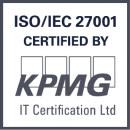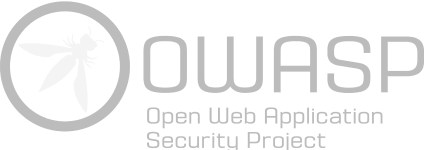Get in touch to learn how intelligence sharing can fit into your compliance workflow
Get in touchTrust is the foundation of any meaningful collaboration. In financial crime prevention, it’s the key that unlocks effective, compliant intelligence sharing across institutions. But how do we build trust in a competitive environment — and what happens when we don’t?
Key takeaways
- Intelligence sharing is only possible when institutions trust each other, their tools, and the legal framework.
- Collaboration between competitors is already happening — and succeeding — across Europe.
- Regulators, clear processes, and real-world examples are critical to building confidence.
- The alternative to structured collaboration is informal risk — which can expose institutions and customers alike.
Why trust matters for intelligence sharing
Everyone in financial crime prevention understands the need for collaboration. Criminals work in networks, exploiting the spaces between institutions. The only way to keep up is to do the same: sharing intelligence, pooling insight, and acting together.
But many of the institutions best placed to collaborate are also competitors. Although regulation is starting to encourage collaboration, these companies must also consider market dynamics, reputation risk, and institutional caution.
Deeper collaboration requires trust, and if there’s one thing we’ve learned at Salv, it’s that trust doesn’t just happen. It must be built.
Without trust, intelligence sharing feels risky. What will a competitor see? What if our internal systems don’t match theirs? What if we made a mistake?
These are valid questions — but they miss the bigger picture. When institutions don’t share intelligence, they aren’t protecting internal risk, they’re missing an opportunity. That’s when fraudsters thrive.
Suspicion-led collaboration doesn’t mean exposing vulnerabilities. It means supporting each other’s judgment in real time and understanding that protecting customers is a shared responsibility. Nobody wins when bad actors slip through the cracks.
How trust in intelligence sharing actually works
Collaboration between organisations that are used to competing starts with people. We’ve seen time and again that getting compliance and fraud leads into the same room changes the conversation immediately. When people meet face to face, barriers begin to fall and problem-solving can begin.
These meetings don’t have to be grand summits. Sometimes they’re just roundtables, remote chats, and working sessions where teams can speak freely. But they work. When institutions hear from others who’ve solved the same problems (finding ways to share intelligence securely, get sign-off from legal, and build operational workflows) they start to see what’s possible.
“We prioritise Salv Bridge alerts. Even when they don’t reveal fraud right away, they give us additional context that helps us connect the dots weeks or even months down the line.”
— Financial crime professional, Estonian bank
Even having regulators in the room, just to listen, gives institutions confidence that their efforts are aligned with public interest. The presence of a neutral third party reinforces that collaboration is not a loophole but a necessity.
Shared practices make trust scalable
Trust is also built through structure. It’s easier to act when the process is clear, and when you know someone else has already walked the same path.
That’s why best practice sharing is so important. Across the Salv Bridge network, institutions regularly exchange documentation, including policies (with sensitive details redacted), decision trees, and escalation flows. These are not secret weapons. They’re practical guides that help teams overcome internal hesitation. Once an institution sees how others have set up their intelligence-sharing SOPs, and how straightforward it can be, it becomes much easier to move forward.
This is how trust scales: not just through good intentions, but through transparent, repeatable processes.
Trust in intelligence sharing isn’t just between banks. It’s also between banks and fintechs, the private sector and regulators — even across teams within the same organisation, where siloes often block action. In complex institutions, it’s not unusual for one department to believe something is forbidden only to find another team already doing it. Establishing confidence means breaking down these internal silos, so everyone understands what’s possible, and what others are already doing.
Regulators can play a powerful role here, not by issuing new laws, but simply by showing up. When they attend the same sessions as banks and fintechs, they send a clear message: you are not alone, and this work matters.
“It’s fast, user-friendly, and absolutely indispensable. We rely on it to handle fraud prevention and prepare for reimbursement rules. Compared to Swift and email, it’s like stepping from fax to future.”
— Fraud leader, European fintech
When trust is missing
The alternative to structured trust is unstructured risk. A quick coffee chat, a message to a former colleague, a vague email that’s never followed up. That’s intelligence sharing too, but it’s informal, unverifiable, and unsupported by policy.
When trust doesn’t exist, institutions retreat into silence, and fraudsters use mule accounts, phishing scams, and social engineering to stay just ahead of detection — exploiting gaps in coordination.
At Salv, we’ve seen the difference trust makes. We’ve seen money recovered because one institution acted on another’s alert. We’ve seen real victims protected. And we’ve seen investigators re-energised because they know they’re not fighting alone.
In a networked world, trust is not a weakness. It’s a strength. Institutions that invest in collaboration are better protected, more resilient, and faster to respond. Collaboration doesn’t weaken market standing — it reinforces it. Institutions that earn trust become more valuable partners, more credible actors, and more agile competitors.
Building trust in a competitive industry isn’t easy. But it is possible. We’ve seen it happen in multiple countries. We’ve seen it work between banks, between fintechs, and between sectors. And we’ve seen what happens when it’s missing. Now is the time to make trust the foundation in the fight against financial crime.
Frequently asked questions
How do financial institutions build trust with competitors?
Through repeated collaboration, shared SOPs, transparent governance, and human connection — often starting with joint working sessions or regulated roundtables.
Is it legal to share financial crime intelligence with other institutions?
Yes. Article 75 of the EU AMLR and similar UK guidance set the parameters for compliant collaboration.
What’s the risk of not collaborating?
Fraudsters exploit gaps between institutions. Without intelligence sharing, institutions risk slower responses, lower recovery rates, and missed opportunities to stop cross-institutional threats.
What role do regulators play in trust building?
They don’t need to create new laws — often their presence alone helps legitimise and encourage safe collaboration between private entities.
How does Salv Bridge support trust-based collaboration?
Salv Bridge provides a secure, structured way to exchange intelligence, track activity, and build confidence internally and externally — already trusted by 100+ institutions across Europe.



